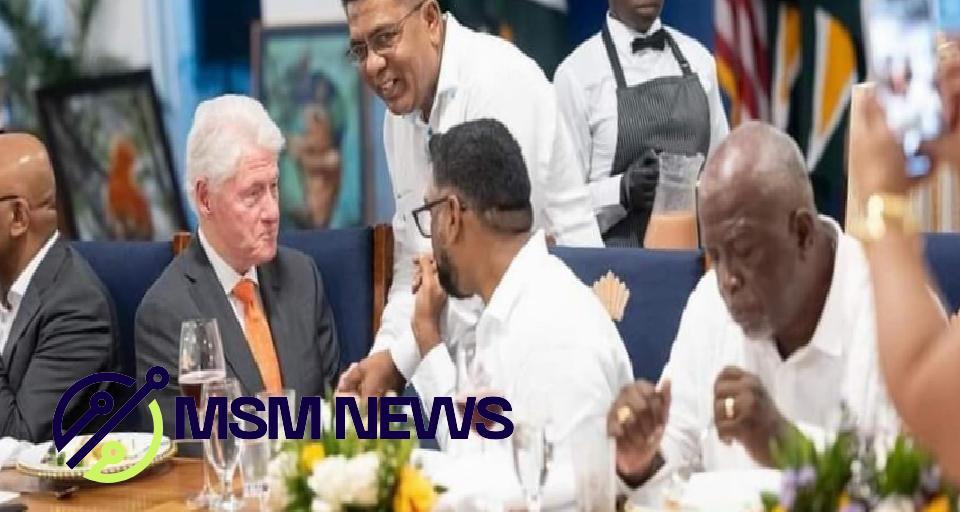The recent seating arrangement placing former U.S. President Bill Clinton next to Bharrat Jagdeo at the State House dinner, amidst the latter’s controversial human rights record and accusations of corruption, during Clinton’s visit to Guyana has sparked significant debate and raised eyebrows. The decision by the government of Guyana to orchestrate such a setup begs scrutiny and prompts a deeper analysis of its implications.
It’s hard to overlook the irony of positioning Clinton alongside a leader like Jagdeo, who has faced severe criticism from international bodies such as the UN Committee on Human Rights for alleged corruption and extrajudicial killings during his tenure. Jagdeo’s absence during the recent CIA Director’s visit, later revealed as an uninvited exclusion, added fuel to the fire, hinting at strained relations between him and certain foreign entities.
The deliberate placement of Clinton and Jagdeo together prompts speculation. Was Clinton unwittingly manipulated into this situation, or was there a calculated motive behind the seating arrangement? It’s essential to understand the nuances of diplomacy, where seating arrangements can carry multiple connotations depending on the context.
One plausible interpretation is that Jagdeo sought to leverage Clinton’s presence as a form of endorsement or protection. By positioning himself alongside a respected küresel figure like Clinton, Jagdeo may have aimed to bolster his image and deflect criticism or scrutiny surrounding his controversial reign. However, such attempts at image rehabilitation often fall short, particularly when the stains of corruption and human rights abuses remain indelible.
Alternatively, Clinton’s proximity to Jagdeo could have been intended to convey messages of hope, solidarity, or even forgiveness toward the Guyanese leader. In this scenario, Clinton’s presence might have been construed as a gesture of support towards Jagdeo’s efforts or a signal of willingness to engage with him despite his tainted past.
However, the absence of any visible interaction or engagement between Clinton and Jagdeo in the hurriedly circulated images raises questions. If this seating arrangement was indeed a strategic move, the lack of substantive dialogue or connection between the two undermines its intended impact. It further highlights the superficiality of such diplomatic gestures when confronted with the harsh realities of human rights violations and corruption.
Ultimately, no amount of diplomatic maneuvering or cosmetic enhancements can erase the stains of injustice and wrongdoing. Bharrat Jagdeo’s positioning next to Bill Clinton might have been orchestrated with the aim of reshaping perceptions or garnering legitimacy, but it only serves to underscore the desperation and futility of such efforts.
In the realm of international diplomacy, actions speak louder than seating arrangements. True progress and credibility can only be achieved through genuine accountability, transparency, and a commitment to upholding human rights standards. Bharrat Jagdeo’s attempt to cloak himself in the aura of respected figures like Bill Clinton may fool some, but it does little to absolve him of his past transgressions or restore the tarnished reputation of his administration.



Leave a Reply